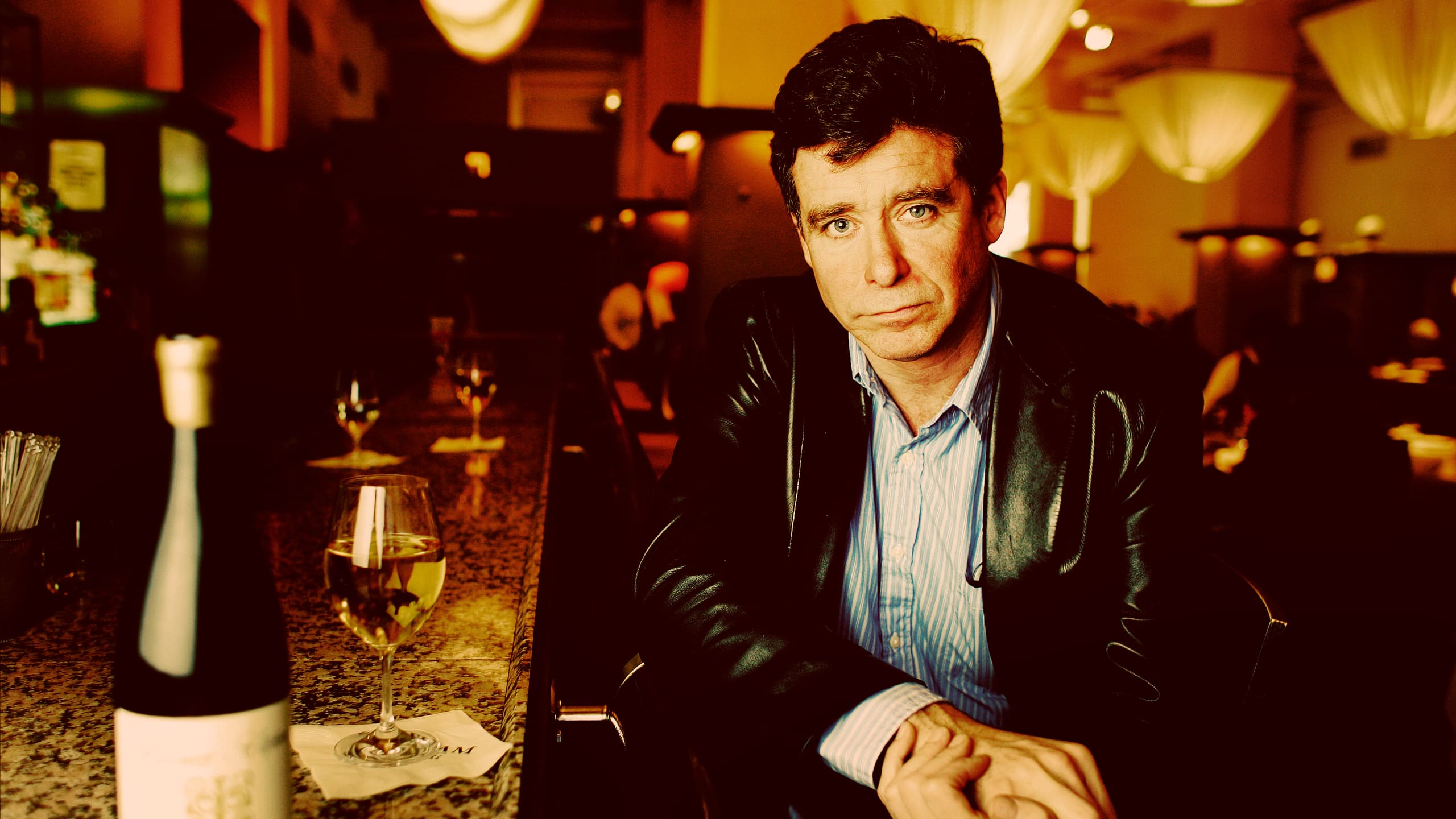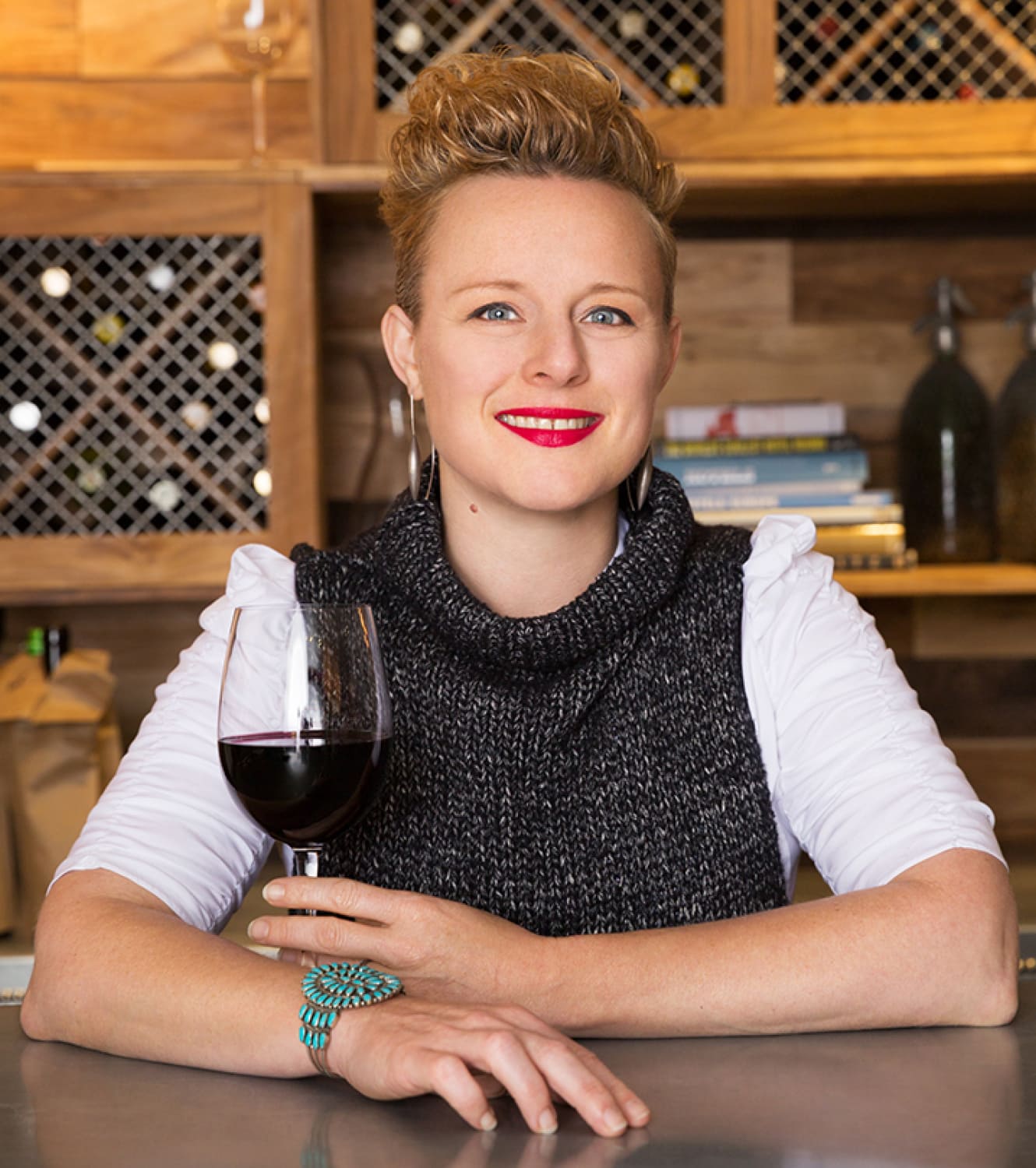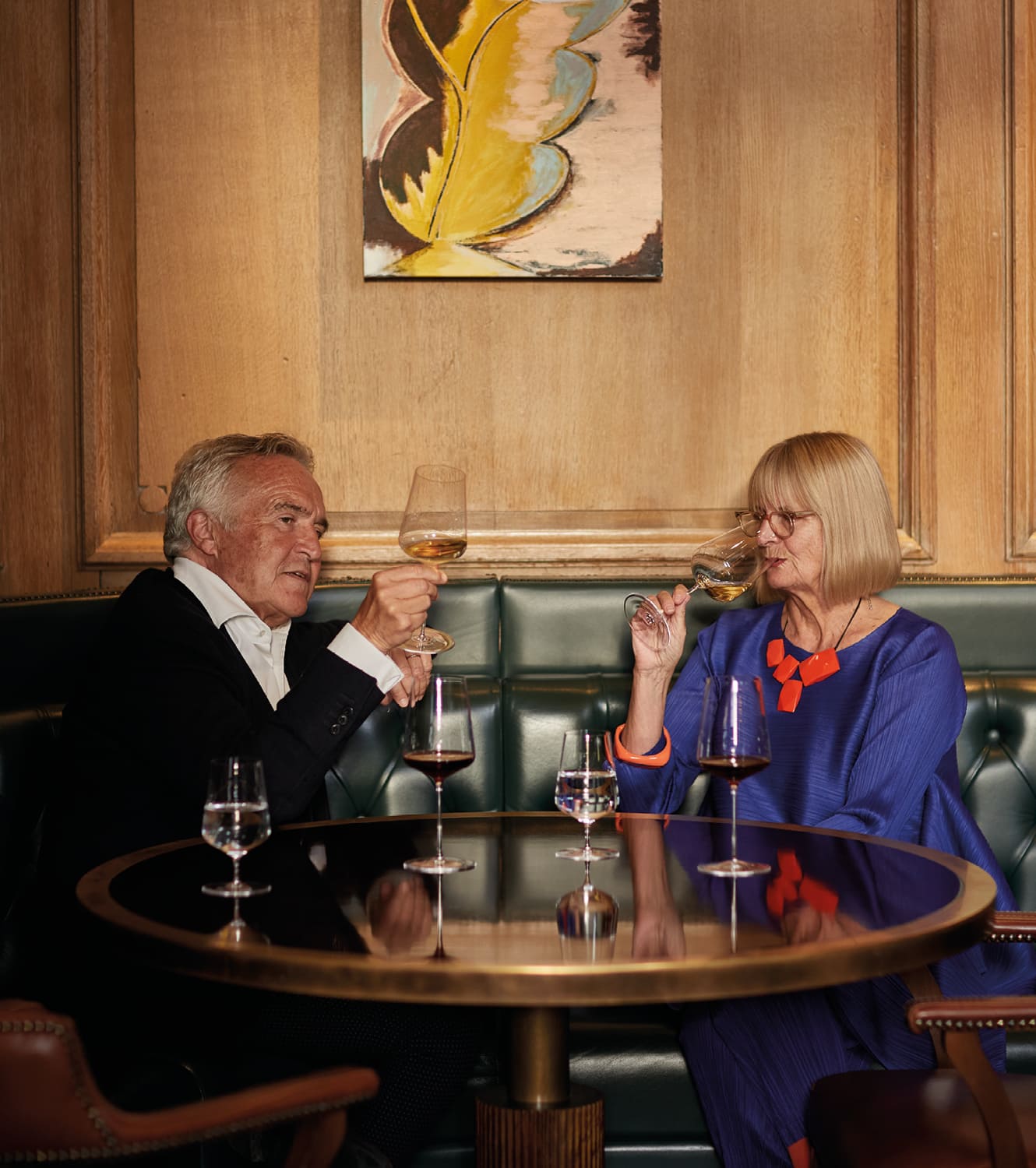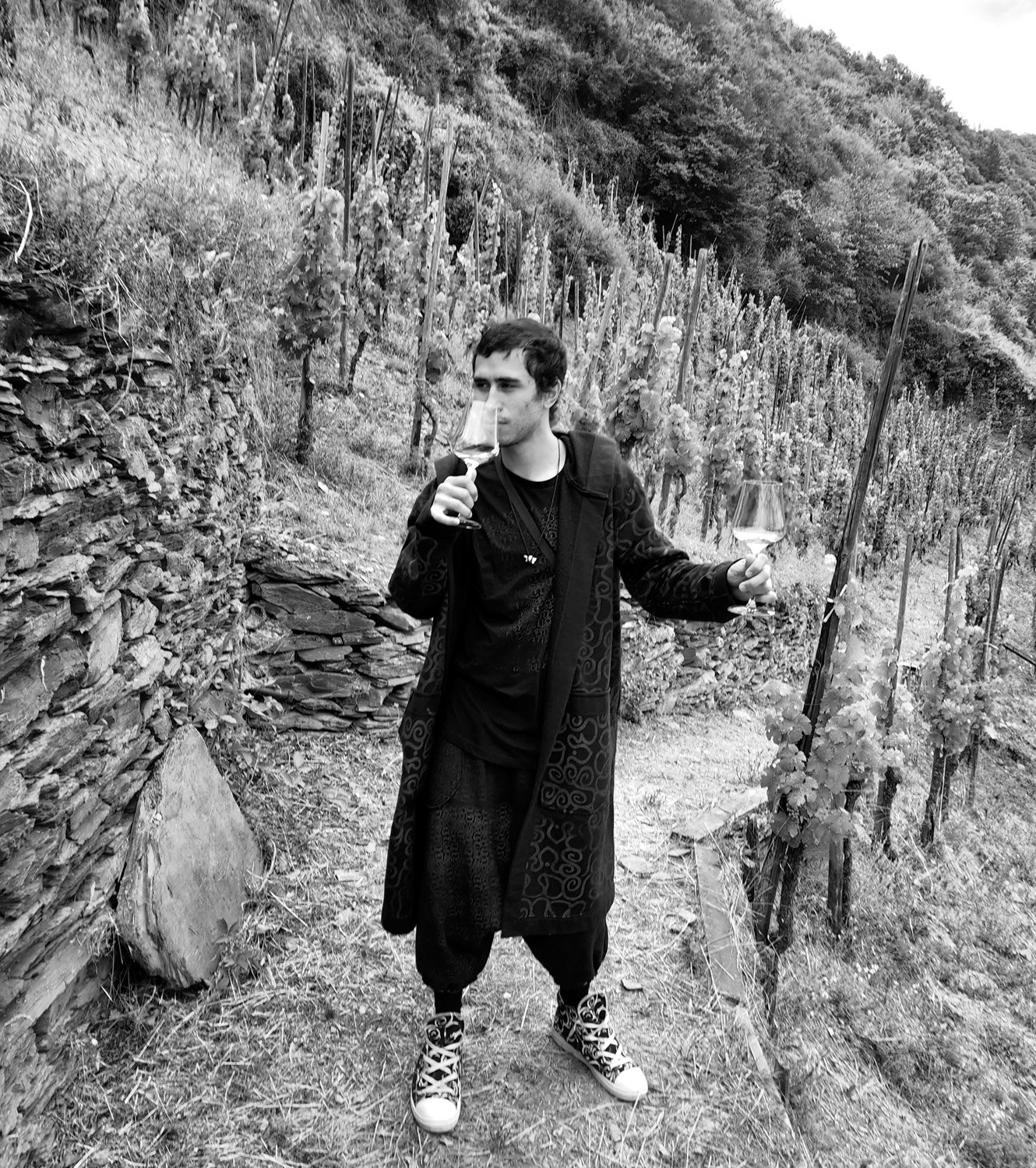
Bright wines, Big city
Jordan Mackay meets Jay McInerney for dinner to retrace his journey from literary sensation to leading wine columnist, sampling some fine bottles along the way
When I selected the renowned The Four Horsemen as a destination, I thought it could be interesting to meet Jay McInerney – novelist, literary celebrity and wine writer – away from the plush leather banquettes of his Manhattan haunts, in a Brooklyn wine hipster spot that might foment discussion about current wine trends. Yet over the course of a four-bottle dinner, we were interrupted three times by friends and acquaintances of his – a book publicist who wanted to send him new novels to review, a fine wine broker who invited him to a high-flying collector’s dinner (entrance fee: two vintages of DRC’s La Tâche), and none other than, visiting from London, Jancis Robinson, queen of all wine writers and a friend since the very dawn of McInerney’s vinous existence.
When I arrived (on time), McInerney was already perched in one of our reserved counter spots, dressed nattily in a navy suit, pressed white collar shirt, no tie. At 67, he sports a trim figure and a full head of dark hair. Conversation came easily, as McInerney manages to speak about his rather epic life, populated by all manner of rich and famous, without coming across at all pretentious or elitist.
Since the 1984 release of his first and still beloved best-seller Bright Lights, Big City, the famed member of the 1980s “Brat pack” of young New York writers has published seven more novels and collections of stories and journalism. Ever associated with the go-go 1980s New York of cocaine, fashion models and disco clubs, as chronicled in his first book, along his journey has McInerney morphed into something less prestigious but more rare than novelist.
He became a wine writer.
As our first bottle arrived, a 2020 Savignin from Domaine des Marnes Blanches in the Jura, McInerney recalled: “When I was first asked to write about wine, I said to my friend who had been asked to take over House & Garden magazine, ‘Look, I just don’t know enough.’ She said, ‘You’re passionate about wine and a really good writer. All the wine writing I see is technical and boring. As a novice, it just doesn’t speak to me.’ I said, ‘Okay, I’ll do it for six months.’ And I’m still doing it today.”
The white we had ordered was good, but rather tart and strict. “Saves you a trip to the dentist,” McInerney cracked. “Savignin this young, you’re getting mostly acid.” He wasn’t wrong, so we poured ourselves a farewell sip and sent the bottle to Jancis’ table to be analyzed by her large group.
McInerney’s involvement with wine has, in some ways, always been intertwined with his literary life. At a job in a bottle shop in Syracuse, New York where he studied writing, he began to educate himself. Then, while visiting England in 1985 to promote Bright Lights, he was invited to dinner by novelist Julian Barnes, a wine collector who would become what McInerney has called his “oenophilic mentor.” (Also at the dinner were none other than Jancis Robinson and her husband Nick Lander.) The 1962 and 1967 Châteauneuf-du-Papes Barnes served were revelations. Over the following years, McInerney and Barnes became fervid correspondents (via fax machine) about, among other subjects, wine, and McInerney began collecting, which has remained a passion for the last three decades.
“There’s so much more good will in the food and wine world than in the literary world. Nobody treated me with disdain. They would just say, ‘I’ve read your books, let’s sit and have a glass”
McInerney’s wine writing debut was unusual in that he entered the trade while already enjoying a rarefied echelon of wine, as opposed to, say working his way up through the trades, writing about bargain wines. Though he claimed to not know much, by 1996 McInerney already had a cellar full of 1982 Bordeaux and rubbed elbows with the global wine elite. Writing for a publication with a well-heeled readership allowed him to pursue pleasures and rarities as his subjects, while his global wine education was financed by a lavish expense account unheard of in today’s wine journalistic world. McInerney noted as our second bottle arrived, a 2020 Blanc de Morgex from the Italian Alps, “I was halfway up Everest when I began. I didn’t have to climb the first 12,000 feet.”
His columns were well-received, as he brought a writerly style that blended the cultivated wit of a social sophisticate with the open-minded curiosity of a traveling wine seeker. For McInerney, the fit was ideal, as he could indulge his wine passion on the company dime while retaining all of his literary cachet. Indeed, the two roles burnished each other.
“There’s so much more good will in the food and wine world than in the literary world,” McInerney said. “In the literary world, all the novelists and poets are jealous and competing. Yet here I come into the wine world, this literary phenomenon, cocaine, brat-pack guy. What do I know about wine? But nobody treated me with disdain. They would just say, ‘Wow, I didn’t know you liked wine. That’s cool. I’ve read your books, let’s sit and have a glass.”
Our second white turned out to be equally shrill, so we drank a couple of glasses and passed it on again. I followed by ordering a red, a light 2018 Ploussard from Frédéric Cossard. It was tasty, but not exactly satisfying to McInerney. Anticipating (correctly) that the expense I had been allocated for our dinner might not cover a truly great wine, he brought one to share. When I mentioned how thoughtful that was, he corrected, “Thoughtful and selfish. I didn’t really want to finish the night on the Ploussard.”
The wine he brought was perfectly pitched: 2005 Clos Rougeard, a culty cabernet franc from the Loire and one of the only bottles in the world venerated not only by the classical wine elite but also by downtown natural wine hipsters, in whose realm, after all, we were. He couldn’t have made a more savvy decision. The corkage fee was a rather steep $80, but well worth it to enjoy such a rare bottle (the 2011 of the same wine sells for $450 on The Four Horsemen’s list). McInerney called his driver, who was standing by, to come drop the bottle off.
Drawing a descriptive connection between a wine and a person is an old wine writer trope that at some point was denounced as facile and obsolete by the modern wine editorial establishment. Yet, McInerney, the classicist, has always stood by metaphor and simile as useful and entertaining tools to describe wine, whose sensual qualities and personality resist exact language. I agree with him.
As expected, McInerney’s Clos Rougeard was spectacular, a bottle that profoundly combined the leathery, spice-infused complexity of age and the spry, bright fruit of youth. Further, it perfectly sketched out the nuances of McInerney’s unusual place in the wine world: that of a fine wine collector of privilege and taste, who appreciates and knows the pedestrian world of rustic French country wines and can navigate the culture that reveres them but has the means and stature to drink as he likes.

Photograph David Howell for Jay McInerney
We recommend
MAKING WAVES
Through her wine program at Cooper’s Hawk, and as chair of the board of the Court of Master Sommeliers, Americas, Emily Wines is making it her mission to bring diversity, inclusivity and excitement to the world of wine
A QUESTION OF TASTE
How does the mystery of taste apply to wine? Stephen Bayley, an outspoken commentator on modern culture, art and design who has made it his life’s mission to unravel the riddle of taste, heads to 67 Pall Mall London to ask the queen critic of wine, Jancis Robinson
Taking the natural course
A former fashion executive, Whitney Pope is now Washington DC-based sommelier and founder of Whit + Wine. Here, she discusses her journey from fashion to fermenting , and why there is a natural space for natural wine
FIELD NOTES
MJ Towler meets underground music producer and Riesling aficionado Skinny Pablo to see how his debut vinyl album Paris Mosel brings wine and terroir into play




